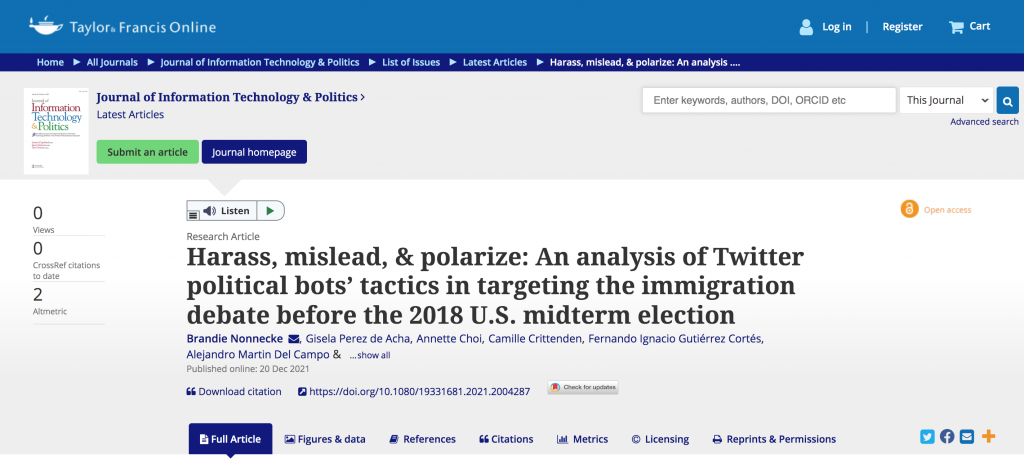I share this text, derived from the Digital Equity project, in which we work with researchers from the University of California, Berkeley and the Tecnológico de Monterrey. My thanks to Brandie Nonnecke and Camille Crittenden of CITRIS and the Banatao Institute for their guidance and invaluable support.

This study investigates the interaction and messaging tactics of political Twitter bots before an election. We analyzed the strategies of influential bots seeking to affect the immigration debate before the 2018 U.S. midterm elections. Our findings reveal that the 10 most influential bots in our dataset all presented an anti-immigration viewpoint, and both posted original tweets and retweeted other bot accounts’ tweets to give a false sense of authenticity and anti-immigration consensus. Bots’ messages relied heavily on negative emotional appeals by spreading harassing language and disinformation likely intended to evoke fear toward immigrants. Such accounts also employed polarizing language to entrench political group identity and provoke partisanship. Our findings help to understand the interaction and messaging tactics employed by political bots and suggest potential strategies that may be employed to counter their effectiveness.
This text is freely accessible and may be consulted at the following link: https://www.tandfonline.com/doi/full/10.1080/19331681.2021.2004287
Brandie Nonnecke, Gisela Perez de Acha, Annette Choi, Camille Crittenden, Fernando Ignacio Gutiérrez Cortés, Alejandro Martin Del Campo & Oscar Mario Miranda-Villanueva (2021) Harass, mislead, & polarize: An analysis of Twitter political bots’ tactics in targeting the immigration debate before the 2018 U.S. midterm election, Journal of Information Technology & Politics, DOI: 10.1080/19331681.2021.2004287
